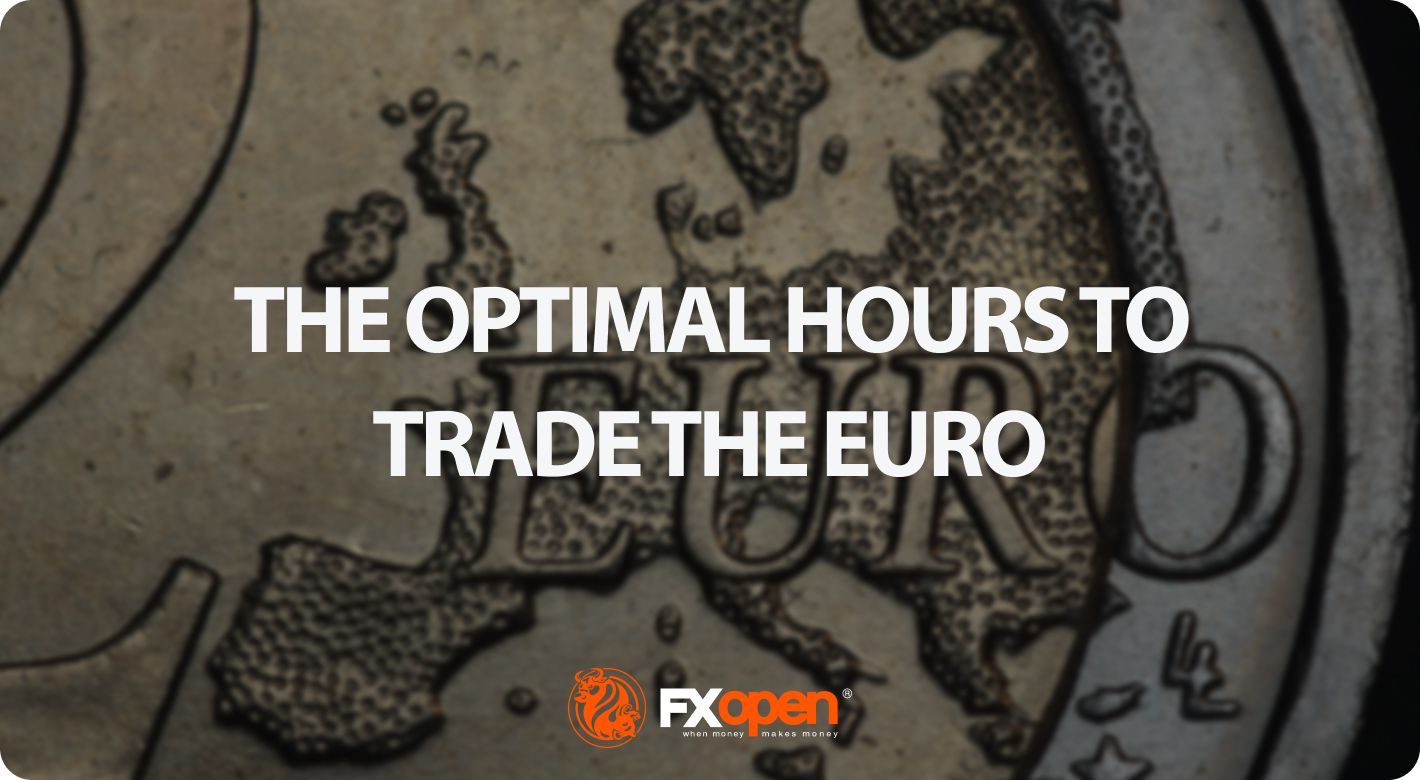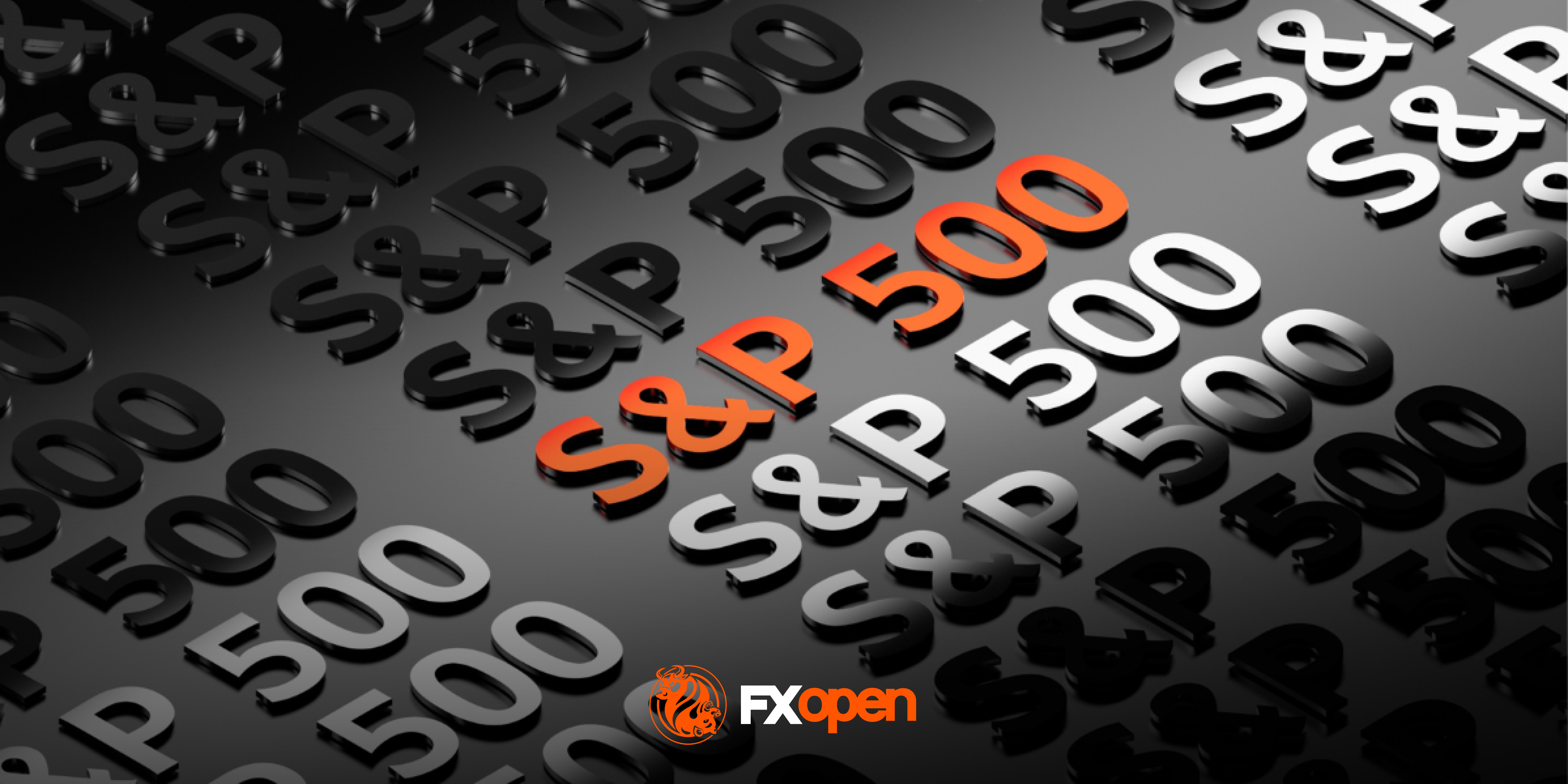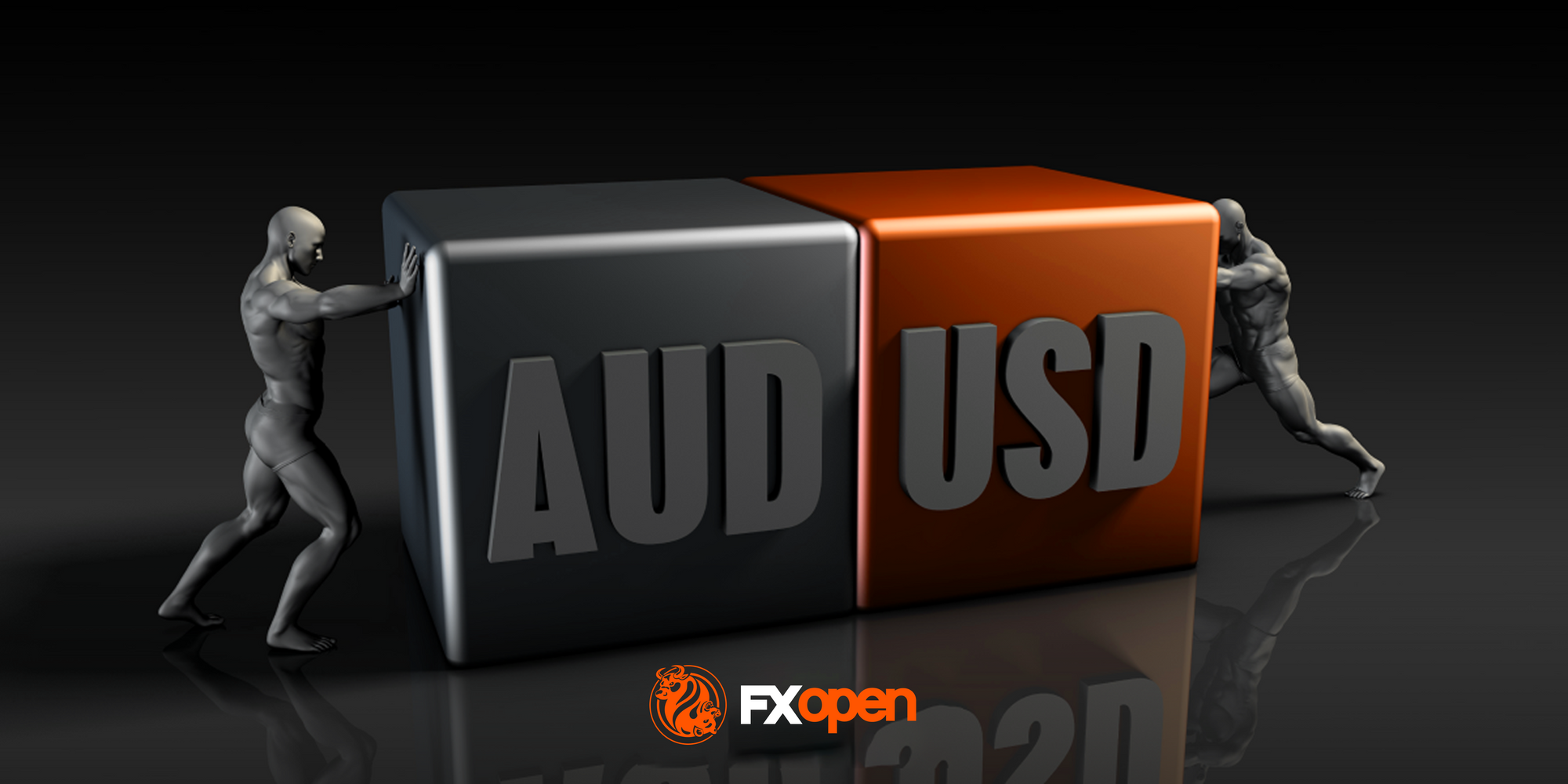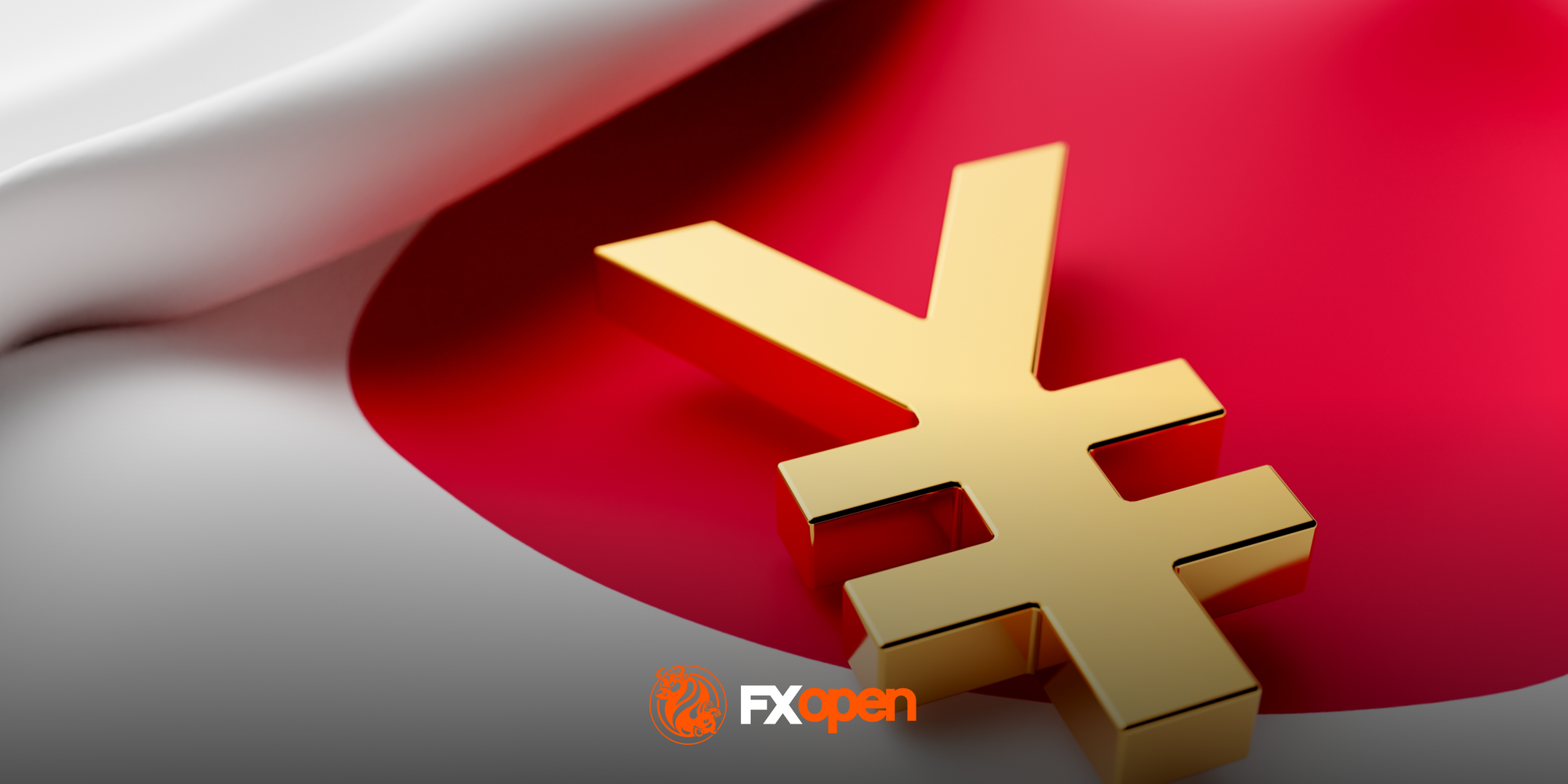FXOpen

In forex trading, currency pairs experience varying levels of volatility at different times. This affects the strategy and assets a trader will choose. Among currencies, the euro holds a prominent position due to its significance in the global economy. It is the second most traded currency after the US dollar in the foreign exchange market.
This FXOpen article explores the best euro trading hours and the key economic factors that influence its price movements. You’ll learn the best time to trade the EUR within each forex market session.
The Euro (EUR)
The euro comprises a significant portion of the daily forex market turnover. Its prominence is mainly attributed to the economic strength of the Eurozone and its role as a major reserve currency.
Traders around the world trade the euro in various currency pairs such as EUR/USD, EUR/AUD and EUR/GBP. In particular, EUR/USD is one of the most actively traded currency pairs in the world and serves as a crucial indicator of global market sentiment.
What Influences the Euro Exchange Rate?
To determine the optimal hours to trade the euro, traders usually consider the price catalysts that affect the exchange rate of a pair containing it. Such catalysts include monetary policy, economic data releases, global risk sentiment, and the other currencies in the pair.
The ECB Monetary Policy
The European Central Bank (ECB) sets the monetary policy for the Eurozone, where interest rates are the main tool. Changes made by the ECB may impact the value of the euro. For example, higher interest rates attract foreign capital and strengthen the currency, and lower ones have the opposite effect. Traders pay high attention to ECB meetings and announcements and plan their trades accordingly.
Economic Data Releases
Gross Domestic Product (GDP), inflation, and employment figures often impact the value of the euro. They provide insights into the health of the Eurozone economy. Positive data may bolster the euro’s value, while negative data may weaken it. To follow data releases and plan their trades, traders may use an Economic Calendar and monitor the latest economic news.
Global Risk Sentiment
The euro may sometimes act as a safe-haven currency during periods of global economic turbulence. Collectively, the Eurozone is one of the largest economies in the world. Its strong economic fundamentals make the euro a resilient currency.
When risk sentiment deteriorates, investors may turn to the EUR as a store of value, giving the currency added strength. For example, economic and political events, such as elections and geopolitical tensions, impact global risk sentiment and, in turn, the value of the euro.
Other Currencies in the Pair
The euro is commonly traded in pairs, including with the USD, AUD, CAD, GBP, and JPY. It’s important to consider price catalysts for these currencies as well.
For example, the EUR/USD pair is highly influenced by US economic data, Federal Reserve policy decisions, and geopolitical events in the United States. Meanwhile, the consequences of Brexit, UK economic data, and Bank of England decisions may strongly affect the EUR/GBP pair.
The Best Hours for EUR Trading
As you may know, the foreign exchange market operates 24 hours a day, five days a week. There are four major sessions: Tokyo, London, New York, and Sydney. The forex trading session hours depend on the global financial markets’ opening and closing times. When sessions overlap, it creates even more trading opportunities.
The optimal trading hours for the euro within each forex market session depend on the pair being traded. The best time coincides with the equity, options, futures exchanges, and currency markets opening hours. The activities of many EUR traders mainly take place during the London and New York trading sessions. Let’s take a look at a more detailed overview.
EUR/USD
The period from 7:00 am to 8:00 am GMT (summer) or from 8:00 am to 9:00 am GMT (winter) is believed to be the best hours to start trading EUR/USD. The EUR/USD most active hours are between 12:00 pm and 4:00 pm GMT (summer) and 1:00 pm and 5:00 pm GMT (winter). During this period, traders may increase their level of efficiency, as the most significant movements of the day are observed. At this time, the London and New York sessions overlap, and a large volume of trading takes place in the two largest markets. That is why spreads are usually the tightest.
EUR/GBP
Trading the EUR/GBP currency pair during the European trading session is a common preference among traders. The best time is from 7:00 am to 4:00 pm GMT (summer) and from 8:00 am to 5:00 pm GMT (winter). The European trading session encompasses the opening of the main financial centre of Europe, London. It’s during this time that trading volume and liquidity in the forex market are at their peak. What’s more, the European session often features the release of economic data related to both the Eurozone and the United Kingdom, which may significantly impact the EUR/GBP pair.
EUR/AUD
The best time to trade the EUR/AUD is during the Sydney trading session or when the Tokyo and London sessions overlap. During this time, the Australian and Asian markets are open, which may lead to higher volatility and liquidity. The Asian session, including Sydney and Tokyo, sets the stage for the daily forex market activities. It provides an opportunity to react to news and events that occurred during the previous trading day in other parts of the world.
EUR/CAD
Traders prefer to trade the EUR/CAD during the European and North American overlap. This is when the London and New York markets are open, which typically leads to increased liquidity and volatility. This heightened activity may provide traders with more opportunities to enter and exit positions, which may be especially advantageous for short-term traders.
EUR/HKD
Trading the EUR/HKD currency pair during the Asian session can be a strategic choice for many forex traders. Many traders say the best time to trade the EUR/HKD is from 11:00 pm to 8:00 am GMT. During the Asian trading session, the forex markets are generally less volatile than during the European or North American sessions. Lower volatility may be an advantage for some trading strategies.
Final Thoughts
The euro is a significant currency in the forex market, and its value is influenced by various economic factors. Traders always pay attention to these factors and plan their trades accordingly. And, of course, timing plays a key role in trading. Choosing the right time to trade the selected currency pair and the right strategy is extremely important.
If you want to engage in trading the EUR, consider opening an FXOpen account and using the TickTrader trading platform, which has a user-friendly interface and numerous trading indicators.
This article represents the opinion of the Companies operating under the FXOpen brand only. It is not to be construed as an offer, solicitation, or recommendation with respect to products and services provided by the Companies operating under the FXOpen brand, nor is it to be considered financial advice.
Stay ahead of the market!
Subscribe now to our mailing list and receive the latest market news and insights delivered directly to your inbox.








